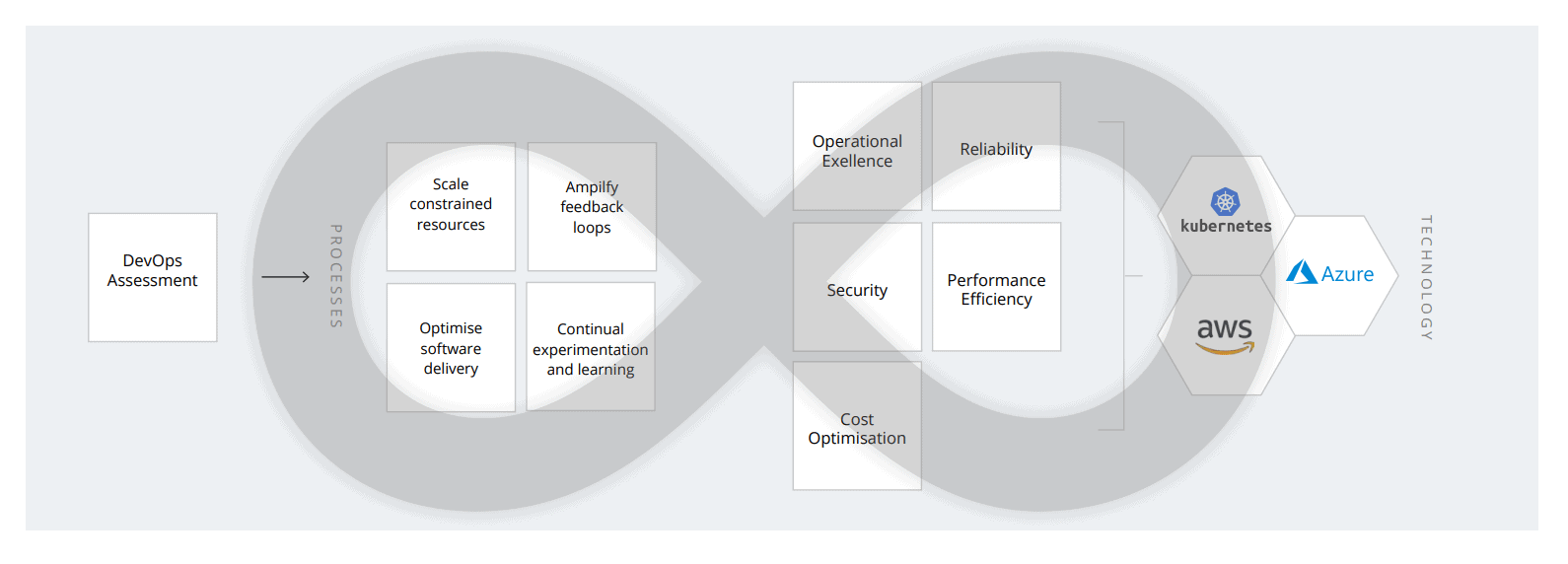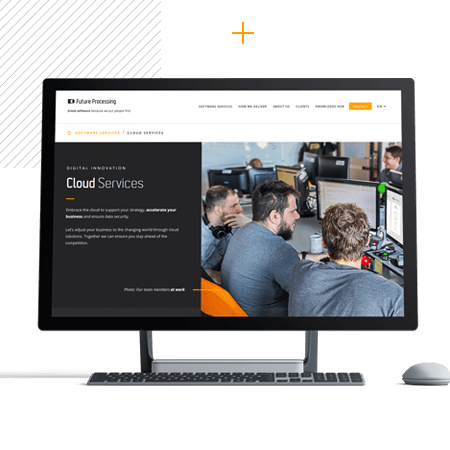
Top 10 DevOps security best practices
‘Operations is crucial to success, but operations can only succeed to the extent that it collaborates with developers and participates in the development of applications that can monitor and heal themselves’. ― Mike Loukides, What is DevOps?
What is DevOps?
DevOps is a portmanteau of the words development and operations. It is used to combine the philosophies, tools and practices of both in order to expand an organisation’s efficiency, speed and security when it comes to software development.
These processes afford businesses the advantage of a greater speed and more nimble development process so that they are able to gain a competitive advantage over their competitors, and serve their customers more effectively in the market.
Born of an agile approach, DevOps practices enable the operations and software development teams to accelerate their delivery through close collaboration and feedback, automation and interactive development.
Adopting a DevOps strategy means that an organisation is taking steps to improve the flow and value delivery of their product through a fully collaborative environment throughout the development cycle.
10 best practices for DevOps security
DevOps security can be a major area of concern for businesses. Known as DevSecOps, there is an increasing drive towards adopting security-focused DevOps, whose aim is to reduce vulnerabilities in software, identify problem areas before they occur and reinforce the system.
It is ever more difficult to ensure DevOps security with applications, with companies often facing a common set of challenges. In order to address these, businesses follow the following DevSecOps best practices.
Build a DevSecOps mindset
Embedding a DevOps security mindset within the organisation is key to achieving long-term success. Begin with a dedicated team of security-focused individuals and continue to build until that philosophy is present within all areas of the business so that it is ingrained in everything that you do.
- The key to DevSecOps success is to foster that mindset by operating in iterations until it is a company-wide practice.
Automate tools and processes
DevOps is inherently focused on automation, so continuing this on with your security tools is the logical next step. Automation of security practices ensures that they are consistent and reliable, allowing you to identify any erroneous activity that pops up.
- Take account of which security practices can be automated and work to develop as many of these as possible to optimise your systems.
Take on security and quality issues together
It is often the case that security and quality are treated as two separate entities. However, this is not always the best approach as it leads to solutions that are mutually exclusive and don’t address both problems together. By taking simple steps such as maintaining quality and security findings in the same place, both teams are able to work with both types of issues which will increase the security and quality of the process or tool with equal importance.
- This enables organisations to develop more comprehensive solutions which are secure and of good quality.
Build security in from the beginning
Building security measures in from the very beginning can be tricky but is certainly the best way to ensure a secure operation. Beginning even before a single line of code has been written, security activities such as architecture reviews and threat modelling help set the necessary security standards for a project that need to be implemented during the software development cycle.
- By training your teams to identify and build security measures in from before the main project even starts is a tried and tested method used to fix security issues and creates awareness within the company itself.
Identify the ‘when’ before the ‘how’
When beginning their DevSecOps, it is natural for companies to get first drawn into thinking about which security activities are needed, which tools to buy and so on.
- However, it’s important not to run before you can walk, so it’s crucial that we first think about when to implement these security measures, and only then think about how.
Start small to make security manageable
When companies begin their DevSecOps, it’s very easy to become overwhelmed and not see the wood through the trees. Development teams can suddenly be inundated with the security vulnerabilities they have identified and feel the need to address them all at once (which is next to impossible), triggering a potential reluctance to fix security issues.
- Therefore, it is crucial to begin small and start early. Start with tiny, manageable security tasks that gradually increase in scope over time.
Collect success metrics
It is really important to have systems in place to collect information about the success (or failure) of your DevSecOps at every stage.
- This information will guide you in creating metrics to optimise your operations, highlighting key areas that are working and should be continued and areas that need development and need more focus.
Schedule in manual tasks
Although it is possible to automate many DevSecOps, there will inevitably be certain types of security activities that just need to be done manually. It is really important to factor in these activities at regular intervals and not shy away from them.
- This helps to balance the timeline of the automated processes and creates a better system overall.
Automate governance models
Governance models are traditionally incompatible with the fundamental goals of DevSecOps – to be quick, safe and to deliver secure software.
- Therefore, it is important to try and automate governance activities where possible, along with security testing.
Learn from any mistakes
DevSecOps are iterative, meaning there are always opportunities to reflect on the success of an operation and develop it further. Learning from our failures is important in all walks of life and that is never truer than when tackling software security.
- Creating a good, well-informed feedback loop helps to optimise all tools and processes and ultimately, reduce the chance of failure.
How to implement DevOps security best practices?
The key to implementing best practices for DevOps security in the workplace is to adopt a bottom-up approach. Don’t start off too hot and bite off more than you can chew. Assign a small team of dedicated DevSecOps personnel who understand and embody a security-focused mindset, and have them start to implement security into the design and build of your applications.
Create comprehensive feedback and development channels to ensure that you are constantly reviewing the effectiveness of your systems and optimising them. Soon enough, your DevOps will evolve to DevSecOps and your organisation will benefit hugely.
Conclusion
The importance of DevOps security best practices and why you should start implementing them today. The future of DevOps is bright. Transforming your company to a DevSecOps-focused enterprise is no small matter. It comes with challenges, trials and tribulations that would understandably make any reasonable director think twice.
Your company’s security is paramount, and it takes time to set up all the tools and processes to make that happen, so don’t delay, set up today and you will be enjoying the fruits of your labour in no time!






